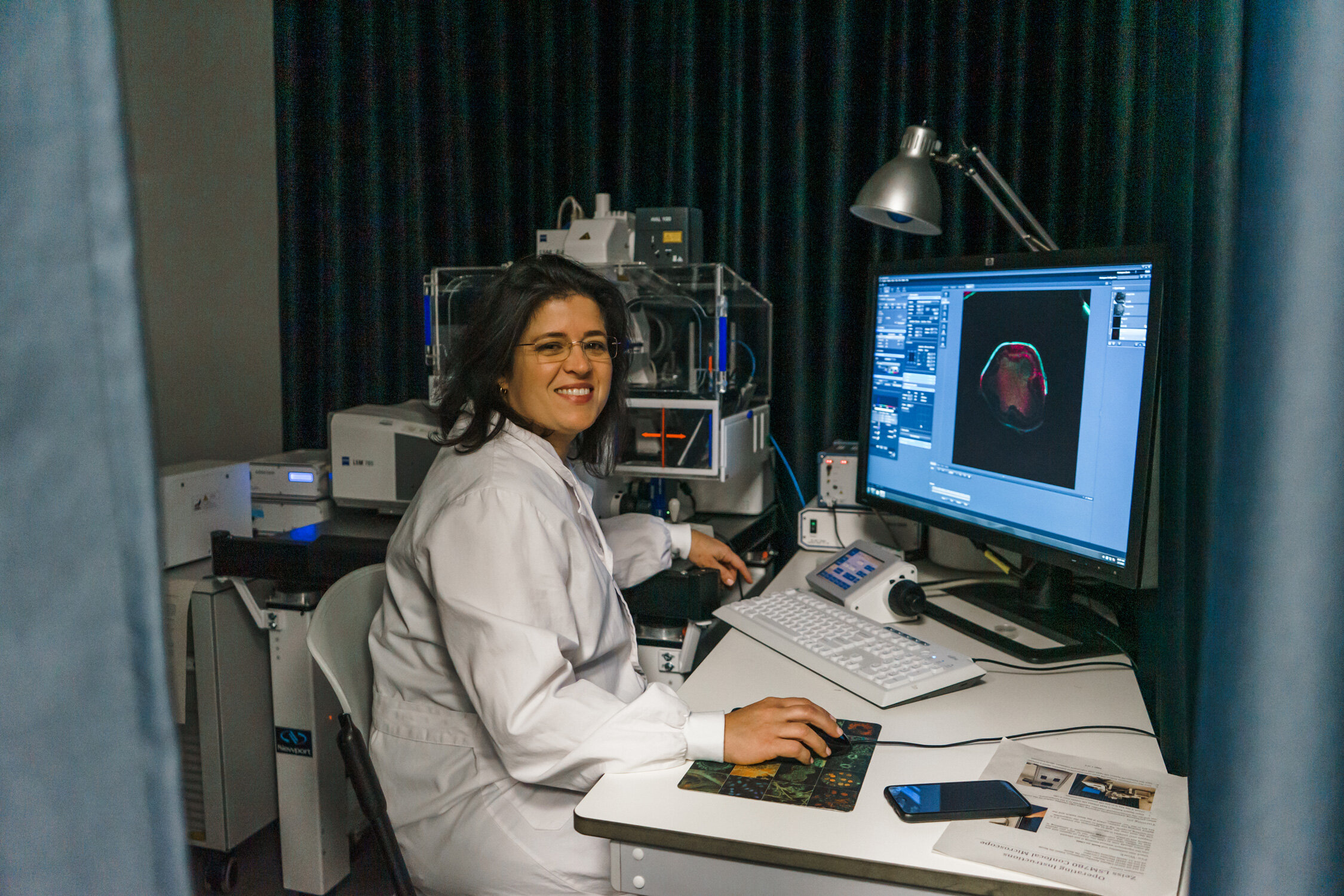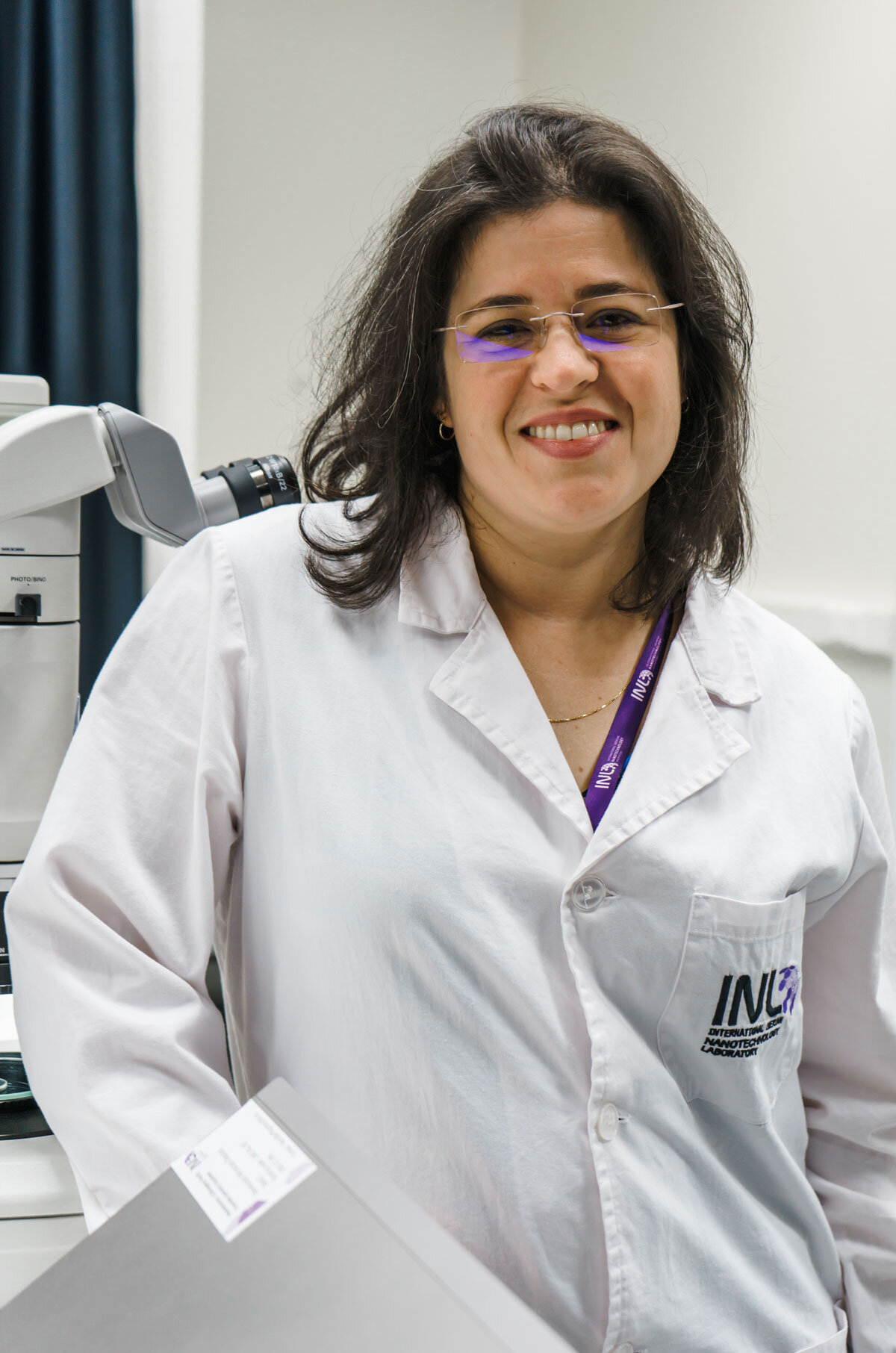
Celebrating WOMEN IN SCIENCE: Interview with Mariana Carvalho
February 24, 2020
Today we bring to the spotlight Mariana Carvalho, a Research Engineer in the Nano Devices group at INL. Her main research area is in Bio-nano-photonics, primarily in optical coherence tomography (OCT) and optical microscopy (SPIM, fluorescent, confocal and non-linear microscopy) and she focuses her work on the development of new tools for in vivo diagnosis, specific in applications on cardiovascular diseases.
Can you tell us a bit about your career path and how did you come to INL?
Well… it was a long way before coming to INL. I am an experimental Physicist specialised in optical imaging techniques, such as OCT and optical microscopy, and I have been involved with science and research ever since I started as an undergrad in 1997.
All my academic path was made in Brazil at the Physics department of the Universidade Federal de Pernambuco in Recife, my hometown. And for one year during my PhD (finished in 2006), I had the opportunity to go to MIT – USA. There, I researched on Spectral OCT and worked with the inventors of the technique, which was just starting to arise at the time. With my “forever” Brazilian supervisor, Anderson Gomes, I worked in nonlinear optics, spectroscopy and Optical communications, among other things, before starting in optics applied to medicine and dentistry.
I specialised in the optical instrumentation and I was invited to work in a company in Brazil (OPTO Eletrônica) to develop Ophthalmologic instruments. During three years I worked in the Research and Development department and I was also involved in the development of aero-space cameras and on its land testing equipment. I was very proud of what our group at OPTO had achieved and when the CBERs 3 and 4 satellites were launched and the cameras we developed started to send images, wow… we did it!
After that, I decided to dedicate my work and research to Biophotonics and Medical Applications. I spent some time working with photodynamic therapy (PDT) and multiphoton microscopy (a post-doc at IFSC/USP). Some years later I engaged in another post-doc, this time at Durham University in the UK. There I was working on the development of new instrumentation for a SPIM microscope, giving it the capability to perform localised PDT.
I came back to my hometown in Brazil, to work in my former research group, now on the nanophotonics field. One day I got an email with the advertisement for a new research position at INL, and the description looked like it was made for me. So I applied, it was my first time applying for a job online, and I was selected. Since 2017 I am at INL, working and learning a little bit more every day.
What is the importance of your research?
I realised that I enjoyed solving problems, no matter to what end. And to be able to solve problems for health applications is very exciting. To work on something that can be used for early diagnosis and prevention of problems that can cause death is highly important.
What is the most exciting discovery you made during your research?
Here at INL, I am working on a problem related to cardiovascular imaging and the diagnosis of atherosclerotic plaques. A disease that is the origin of the highest causes of death worldwide. It is a very complex and multidisciplinary subject and we are just starting to scratch the problem.
We want to detect in an intravascular OCT image (that looks like an ultrasound image) small particles we are linking in specific places. We were able to perform some initial tests and we were able to recognize the regions where the particles were in real-time. We were not expecting that at all! We thought we would have to work on the image to differentiate parts with and without or particles. It was great to see the reaction of the interventional cardiologists when we performed the experiment and they could recognize the highlighted areas in real-time.
Briefly, what excites you about your work?
For me, it is very fulfilling to be able to help to solve problems using the knowledge I have accumulated over these years working in optical research. It does not matter if I am teaching students and they are learning new things, so I am passing forward what I know; or if I am helping to fix an instrument or find solutions for unsolved problems. In research, every day we learn something new every day, we are always studying, and it is very exciting to be able to contribute to something that would make someone’s life better.
This is what I consider the best thing about science.





